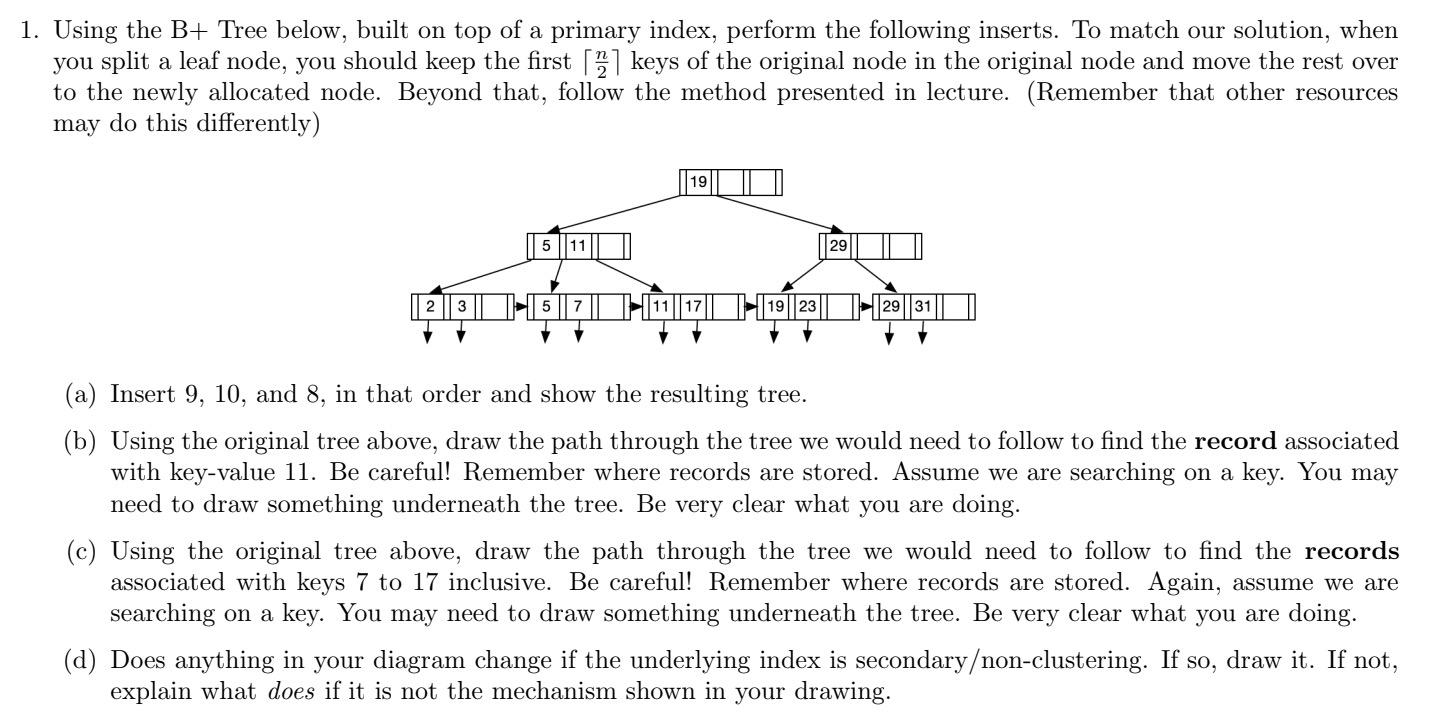Answered step by step
Verified Expert Solution
Question
1 Approved Answer
1. Using the B+ Tree below, built on top of a primary index, perform the following inserts. To match our solution, when you split

1. Using the B+ Tree below, built on top of a primary index, perform the following inserts. To match our solution, when you split a leaf node, you should keep the first [2] keys of the original node in the original node and move the rest over to the newly allocated node. Beyond that, follow the method presented in lecture. (Remember that other resources may do this differently) 5 11 |||5||7|||||11||17| 29 19|23|||||29||31 (a) Insert 9, 10, and 8, in that order and show the resulting tree. (b) Using the original tree above, draw the path through the tree we would need to follow to find the record associated with key-value 11. Be careful! Remember where records are stored. Assume we are searching on a key. You may need to draw something underneath the tree. Be very clear what you are doing. (c) Using the original tree above, draw the path through the tree we would need to follow to find the records associated with keys 7 to 17 inclusive. Be careful! Remember where records are stored. Again, assume we are searching on a key. You may need to draw something underneath the tree. Be very clear what you are doing. (d) Does anything in your diagram change if the underlying index is secondary/non-clustering. If so, draw it. If not, explain what does if it is not the mechanism shown in your drawing.
Step by Step Solution
There are 3 Steps involved in it
Step: 1
a To insert the keys 9 10 and 8 in that order we start with the given B Tree 19 23 5 17 29 57 First we insert 9 We follow the algorithm taught in the ...
Get Instant Access to Expert-Tailored Solutions
See step-by-step solutions with expert insights and AI powered tools for academic success
Step: 2

Step: 3

Ace Your Homework with AI
Get the answers you need in no time with our AI-driven, step-by-step assistance
Get Started


